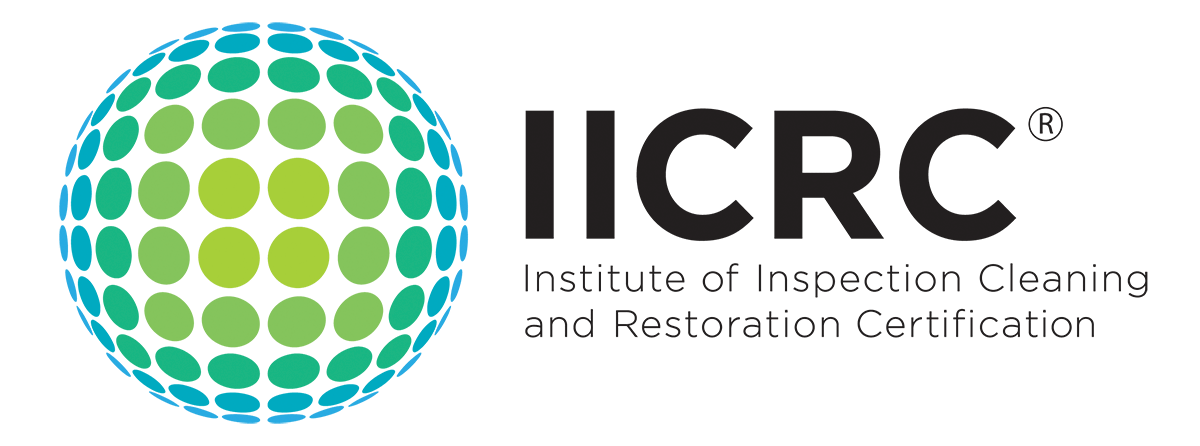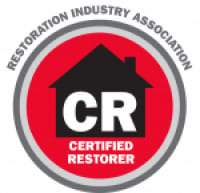Photo credit: akinbostanci/ E+ via Getty Images
Building a
Sustainable Restoration Workforce
By Lorne McIntyre, CR, WLS, FLS, CLS
If you are struggling to find qualified, skilled workers to fill open positions, you are not alone. The restoration and construction sector has a labor problem. The ongoing pandemic has taken a toll on the industry – it is forcing general contractors to reconsider skilled labor and the value of in-house development. With supply chain disruptions and labor shortages, it is a big problem for businesses around the world.
According to the 2020 Construction Outlook Survey by the Associated General Contractors of America (AGC), 81% of construction firms have trouble filling both salaried and hourly craft positions, and 72% anticipate labor shortages to be the biggest hurdle in the next year.
Recruiting and retaining dependable, skilled labor is one of the biggest challenges for contractors across North America. Tackling the shortage of skilled labor is not an overnight fix, but creating an education-based career path is one strategy to develop and retain a skilled, loyal workforce. This article focuses on the role of restoration technicians within your company, but can easily be adjusted to help with other divisions of a restoration business.
Property restoration services require specific training and education. Employers must train frontline staff to properly respond and mitigate disasters. Formal training and education reduces the risk and liability of your restoration firm. Dispatching uneducated employees is not an option; it will potentially lead to litigation, loss of your business, and possibly a negative impact to health of the public and your employees.
Many would agree, hands-on experience and field training is of great value in the restoration industry. However, just because a person has done work in the field, does not mean that they have executed their craft competently and skillfully. Education is necessary to supply these technical leadership qualities.
Train people well enough so they can leave; Treat them well enough so they don’t want to.
— Richard Branson
I love this quote, I discovered it one day on a social media platform several years ago. I truly accept this as true and make every attempt to pass on my knowledge to others who I educate in the classroom or do business with.
Creating a clearly planned education and career path for your technicians will help with employee retention and improve the dedication and quality of your restoration efforts.
Lay out the career path of a new employee from day one.
The following career path concept was created by industry leader and colleague Ken Larsen, CR. In his book, “Leadership in Restorative Drying,” Larsen describes in greater detail the following career track and compensation plan.
The latter is a guideline to protect the employer’s education investment, while laying out a career path for the employee, leading to a long-term relationship between the two. Anyone who is serious about their damage-repair career will understand the value of formal education and credentials.
I want to begin by pointing out you need to check your local laws about employee compensation while engaged in formal education or training. When developing a company education and training program, make certain it meets the requirements of regional labor laws. Labor shortages in these challenging times are a complex issue. Creative thinking and clearly defined planning with interesting benefits are required to attract and retain skilled labor.
As an example, one business leader decided to invite their employees to a paid weekend in Las Vegas rather than issue customary year-end bonuses. This creative alternative defined the company culture, improved employee engagement and was less expensive than the unappreciated year-end bonus.
In Larsen's career path model, outlined below, the premise of the incremental (%) pay increase for each certificate/certification acquired is built upon the base salary of the project manager.
New Employee Program – Water Restoration Technician Career Path
You are not ‘just a technician,’ you are a vital element of the success and endurance of this business.

Month 1 to 3
Title: Not applicable – probationary period.
Salary: 33% of PM base salary or starting salary set by employer
Objective: Introduction to company culture, procedures and leadership
Month 3 to 9
Title: Technician Assistant
Salary 37% of PM base salary with a pay increase for each certificate earned
- Institute of Inspection Cleaning and Restoration Certification (IICRC) Water Restoration Technician (WRT) – add 4%
- IICRC Fire Smoke Restoration Technician (FSRT) – add 4%
Month 9 to 18
Title: Technician Apprentice
Salary 45% of PM base salary with a pay increase for each certificate earned
- IICRC Repair & Reinstallation (RRT) – add 3%
- IICRC Applied Structural Drying (ASD) – add 5%
- IICRC Carpet Cleaning Technician (CCT) – add 4%
- American Council for Accredited Certification (ACAC) Council-certified Residential Structural Dryer (CRSD) – add 4%
Month 18: Apprentice Technician will automatically attain IICRC Journeyman status in FSRT & WRT

Month 18 to 36
Title: Restoration Technician
Salary 55% of PM base salary with a pay increase for each certificate earned
- IICRC Upholstery & Fabric Cleaning Technician (UFT) – add 4%
- IICRC Odor Control Technician (OCT) – add 3%
- IICRC Carpet Cleaning Technician (CCT) – add 4%
- IICRC Applied Microbial Remediation Technician (AMRT) – add 5%
- IICRC Health & Safety (HST) – add 3%
- IICRC Color Repair Technician (CRT) – add 3%
- ACAC Council-certified Structural Drying Remediator (CSDR) - add 4%
This technician will lead a small crew of helpers from time to time.
Month 36: Restoration Technician will qualify to apply for IICRC “Master” designation.
Promotion to Restoration Team Leader.
Month 36 to 84
Title: Restoration Team Leader
Salary 70% of PM base salary with a pay increase for each certificate earned as well as discretionary adjustments/bonuses.
This employee will now focus upon managing teams and documentation, reporting to management.
Month 60
- ACAC Council-certified Structural Drying Supervisor (CSDS) – add 8%
- IICRC Commercial Drying Specialist (CDS) – add 8%
- Training for those seeking Project Manager Position
RIA Water Loss Specialist (WLS) – add 10%
Prepare for WLS: Those seeking this credential must recognize the ambitious nature of the credential. To be inducted into this elite status, the restorer shall have the opportunity to start attending international trade conventions like the RIA. This will become not only an employment reward; it will keep employees engaged in their continued learning.
Upon completion of these credentials, the employee may be given a title suitable for their achievement such as “Manager” or “Superintendent.”
The manager or superintendent’s 40-hour work week compensation rate should be very close to the same as a project manager’s base salary. This is an important element of the process.
If all has gone well with the formal training and employee performance up to this point, and if the employee wishes to develop their project management skills, then a custom plan should be developed for the employees’ transition to a full time project manager. Management and leadership is not a natural skill possessed by all people. It must be learned from the seasoned project managers within the company. A mentor program of one to three years is recommended.

Month 96-120: RIA Certified Restorer (CR) certification.
This is a capstone credential to any restorer’s resume. This person is qualified to lead technical matters and other mitigation staff. A CR designation is a very special designation and earns the equivalent of PM base salary plus percentage incentives.
From this point forward, the career of the employee can head in most any direction. The employer’s confidence in the employee’s capabilities are likely to be well founded with such a strong formal education background. It could possibly even lead to joining the executive team and the exploration of company expansion to regional offices and even lead to ownership. This partnership between employee and employer is healthy and is part of developing a company culture that attracts new employees.
In Summary
The career education path and compensation increases outlined above are only a recommendation conjured up by one restorer. But it does show the importance of showing the new employee that there is a plan for their involvement in the company that leads to a fulfilling career. Without this plan, the employee is unlikely to see a future for themselves at your company. This guide should be presented to new prospects during the interviewing process. Layout the career path on day one!
By showing that your firm is committed to developing highly skilled employees, you will attract more talented candidates. Combine this with a clear structure of the earning potential based on educational achievements and dedication to the trade, the company will develop competent and devoted employees; a win-win for both.
This career path plan may be tied to your well-planned training and development program. This will improve productivity and enhance the strength of your human capital, reduce frustration and grievances in the workplace, reduce expensive employee turnover, improve client relations, and increase profitability of the company.
Your firm is not only offering a regular paycheck but a career opportunity too!
Benefits include:
- An unobstructed career path
- A company pledge of their financial security
- Education and development they own for life
- A progressive, encouraging working environment
- Transparent relationship between management and employee
- Work becomes meaningful, more productive, better quality
- Recognition of hard work
- A road map to success
- Rewards that encourage positive behaviors in staff
Why would an employee be motivated to leave a company with this kind of career program and culture?
While the pandemic has certainly impacted restoration labor, it is also a great opportunity to re-examine what has and has not worked for your company. Restoration is a resilient industry and will spring back from the challenges brought on by the pandemic. Tapping into what makes the restoration industry an appealing job, and investing in education and training, can help to find new talent pools that share similar values.
The entire construction and restoration industry needs to pull together to develop a fundamental change in its approach to attracting more people to careers in our industry. Layout the unlimited career path on day one!
Lorne McIntyre, CR, WLS, FLS, CLS, is restoration advisor and technical trainer with Encircle. McIntyre is a veteran of the cleaning and restoration industry with more than 30 years of experience with thousands of completed projects. He has owned and operated a high-volume full-service property restoration firm in Toronto.

